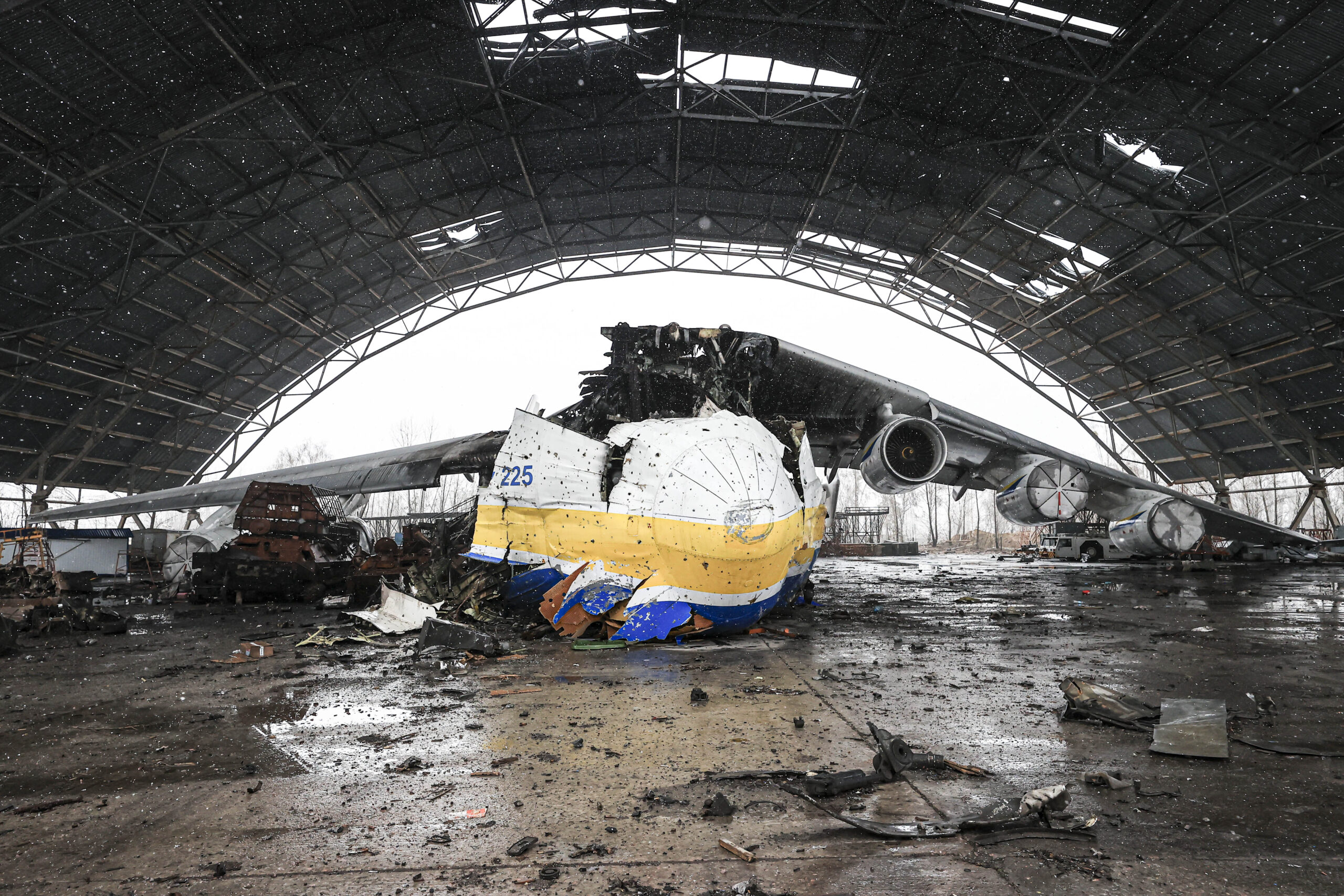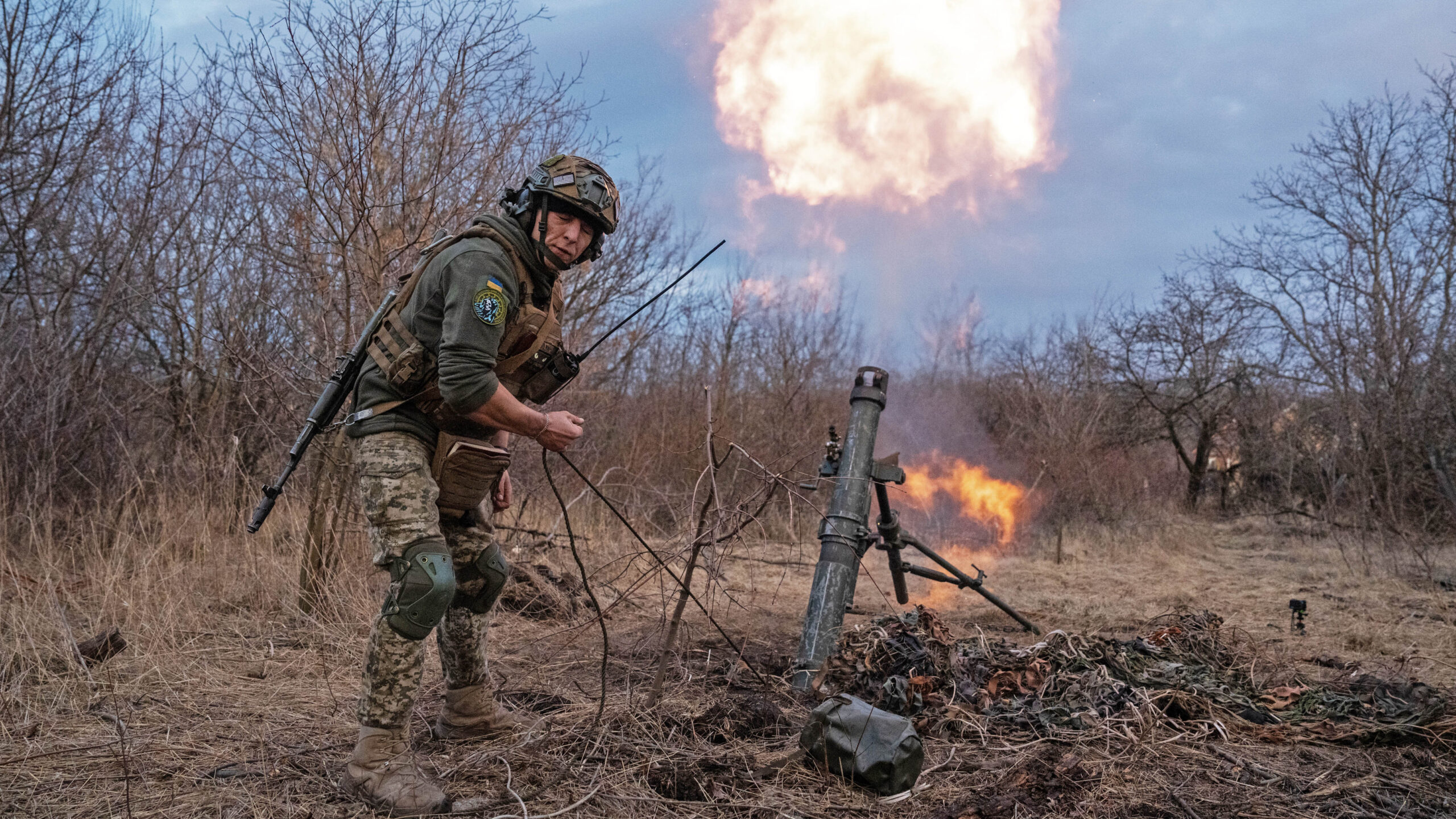Forces from Russia’s Wagner Group private military company may be taking a “tactical pause” as fighting continues around the eastern Ukrainian city of Bakhmut, control of which has been fiercely contested for several months now. According to a U.S. research group and think tank, the Institute for the Study of War, or ISW, the Wagner Group may have taken this action as it awaits much-needed reinforcements to arrive. The group has suffered major losses as the spearhead of the Russian push to take Bakhmut — a city the strategic importance of which is widely disputed.
The ISW contends that Wagner forces will likely from now on take on a reduced role in the Bakhmut offensive, with Russia instead making more use of its regular soldiers, rather than the group’s mercenaries and controversial soldier conscripts.
“The arrival of an increased number of conventional Russian forces to the area may suggest that Russian forces intend to offset the possible culmination of Wagner’s offensive operations in Bakhmut with new conventional troops,” the ISW said in its daily update.
While Wagner has been at the forefront of the Bakhmut offensive, in recent weeks the group’s leader Yevgeny Prigozhin has been increasingly critical of the Kremlin’s decision-making in the conflict, expressing particular concern that the required troops and ammunition were simply not arriving in the area in the numbers needed.
Nevertheless, on Wednesday, Prigozhin said that Russian forces now fully control the eastern part of Bakhmut, a claim that’s still not been independently verified.
“In spite of the colossal resistance of the Ukrainian Armed Forces, we will go forward,” Prigozhin added today. “Despite the sticks in the wheels that are thrown at us at every step, we will overcome this together,” he said.
At the same time, Wagner is continuing efforts to expand its own ranks, including the recent opening of recruitment centers in 42 Russian cities, according to Prigozhin.
It seems that the Kremlin has also stepped up the supply of ammunition to the Bakhmut front, after Prigozhin today thanked the government for a “heroic” increase in the production of ammunition.
According to Reuters, the Wagner Group is now receiving ammunition produced this year, while Prigozhin spoke of ammunition now being produced “in huge quantities, which cover all the necessary needs.”
Prigozhin did, however, continue to warn that wider shortages of ammunition could still have an effect on the Wagner Group and regular forces alike. “I am worried about ammunition and shell shortages not only for the Wagner private military company but for all units of the Russian Army,” he said.
On the Ukrainian side, the authorities remain resolute in their plans to try and hold onto Bakhmut, at least for now. How realistic this is in the long term is unclear, however, with casualties now running as high as an estimated 100-200 a day. This still dwarfs claimed Russian losses, though, with Oleksiy Danilov, Ukraine’s national security chief, saying that one Ukrainian is killed for every seven Russians. Western officials have estimated total Russian casualties in Bakhmut at somewhere between 20,000 and 30,000.
Before we head into the latest news from Ukraine, The War Zone readers can get caught up on our previous rolling coverage here.
The Latest
The major Russian missile barrage on Ukraine yesterday, which included the biggest single-day volley of Kinzhal air-launched ballistic missiles — six, according to the Ukrainian Air Force — killed 11, according to the U.K. Ministry of Defense, the same figure that Ukrainian officials have cited. Ukrainian emergency services had previously put the total dead at nine. You can read our initial report of the attacks here.
At least six of the dead were killed in a strike on a residential area in the western Lviv region, Ukrainian emergency services said. Here, three buildings were destroyed by fire after the missile attack.
Ukraine has seemingly worked swiftly to restore critical services that were damaged by the latest large-scale attack.
Officials today said that the bulk of Kyiv’s power and water supplies had been restored following the strikes. According to Serhiy Popko, the head of the city’s military administration, around 30 percent of the capital remained without heating, with work ongoing to repair the damage.
Meanwhile, in the Kharkiv region, Oleh Synyehubov, the local governor, said that the energy situation remained difficult. “The situation with energy supply in Kharkiv is difficult, because the energy system has suffered significant damage,” he said in a message on Telegram. “Nevertheless, critical infrastructure has already been restored in the city, and [the] water supply has been almost completely restored. The region is more than 90 percent healed. Electric transport does not yet have enough voltage and does not work. The energy industry is working hard to fully restore the energy supply.”
In the Zaporizhzhia region, in the south, power had been restored to around a third of consumers. The latest wave of strikes briefly took the Zaporizhzhia nuclear power plant — Europe’s biggest — off the grid, although it was later reconnected, according to operator Ukrenergo. In the meantime, the plant had been forced to switch to emergency diesel power to prevent a potential catastrophe, officials said.
For Russia, Thursday’s strikes were in retaliation to an alleged cross-border raid last week, details of which remain sketchy. The Russian Ministry of Defense said that its “massive retaliatory strike” hit all its intended targets, destroying drone bases, disrupting railways, and damaging arms manufacturing facilities.
Today there were more air alerts in Ukraine, this time affecting the south of the country, specifically Dnipro, Zaporizhzhia, and Kharkiv. The alert was only brief, however, lasting an hour and 15 minutes.
Kyiv today witnessed the funeral of a prominent military commander, Dmytro Kotsiubailo, who was known by the callsign “Da Vinci.” Thousands gathered to pay their respects to Kotsiubailo, who was killed near Bakhmut on Tuesday at the age of 27.
During the fighting against pro-Russian forces in the east of the country in 2014, Kotsiubailo had been seriously wounded by a tank shell. He returned to action and in 2016 became the youngest commander in the history of the Ukrainian Army. In 2021 he became one of the youngest recipients of the Hero of Ukraine award, presented by Ukrainian President Volodymyr Zelensky.
President Zelensky, who attended the funeral, alongside Finland’s prime minister, Sanna Marin, described Kotsiubailo as “One of the youngest heroes of Ukraine. One of those whose personal history, character, and courage have forever become the history, character, and courage of Ukraine.”
While in Kyiv, Prime Minister Sanna Marin raised the possibility of Finland providing some of its F/A-18C/D Hornet fighter jets to Ukraine. Finland is already planning to replace these aircraft with F-35A stealth fighters, but this is the first time that Finnish Hornets have been specifically mentioned as a possible candidate in Ukraine’s long-running search for new Western combat jets.
In Georgia, meanwhile, the recent protests against the government’s plans to introduce ‘Russia-style’ laws have prompted warning statements from Moscow.
Russian Foreign Minister Sergei Lavrov accused the West of hypocrisy in the case of Georgia and Moldova, according to the Russian state-owned news agency TASS.
“In Moldova protests against the current government are condemned”, Lavrov said, before pointing out that the West supports protests in Georgia “because the opposition in Georgia reflects Western interests, and the opposition in Moldova reflects other interests.”
“Events in Georgia, of course, are orchestrated from outside,” Lavrov added. “This is the same desire to create an irritant on the borders of Russia.”

In Moldova, as we have reported before, the country’s pro-European president, Maia Sandu, has said she fears that Moscow has been plotting a coup against her government.
Lavrov compared the situation in Georgia to that in Ukraine in 2013-14, where the pro-Russian President Viktor Yanukovych was ultimately ousted amid a wave of popular protests. That uprising was soon followed by the Russian annexation of Crimea and pro-Russian, Russian-backed unrest in eastern Ukraine, eventually escalating into the current war in Ukraine.
The same sentiment was echoed in a tweet from Russia’s Ministry of Foreign Affairs in occupied Crimea, warning Georgians “to recall a similar situation in Ukraine in 2014 and what it finally led to!”
The situation as regards Georgia is made much more complex by the status of its two Russian-backed breakaway regions, South Ossetia and Abkhazia, over which Russia and Georgia went to war in 2008. Now, the Kremlin is warning of possible “provocations” in those provinces, Foreign Minister Peskov adding that Moscow was watching the situation “with concern.”
In the latest twist to the story of the demise of the unique Antonov An-225 Mriya super-heavy cargo aircraft, destroyed on the ground during fighting for Hostomel Airport, outside Kyiv, at the start of the war, Ukraine is now accusing three company workers of complicity in the incident.
Today, three former Antonov senior managers received suspicion notices, claiming that they had obstructed the Ukrainian Armed Forces, which allowed Russian troops to destroy the giant cargo plane.
According to Reuters, the prosecutor general’s office and the SBU security service allege that the three former officials prevented members of the Ukrainian National Guard from building fortifications at Hostomel Airport, immediately ahead of the abortive Russian airborne operation there.

The SBU and prosecutors have stated that two of the suspects have been detained while the former general director of the Antonov company has been declared a wanted person. If found guilty, the individuals could each face up to 15 years in prison.
This video, recently posted to social media, purports to show a prototype of a new type of Ukrainian-produced drone. While the role of the drone in question is unclear at present, it’s noteworthy that Ukraine has, of late, been developing improvised ‘kamikaze’ drones of different designs, some of which have apparently been used to strike targets in Russia. You can read more about this fast-developing aspect of the war here.
More conventional drones are also increasingly appearing in Ukrainian hands, including these locally produced Poseidon VTOL unmanned aerial vehicles, which are seen here together with the British-supplied trucks that serve as their control stations.
A Russian ‘kamikaze’ drone type, the Lancet, was reputedly responsible for the following destruction of a Ukrainian S-300P (SA-10 Grumble) surface-to-air missile transporter-erector-launcher. At this stage, the state and location of the strike remain unclear and the incident may well date from earlier in the conflict.
Fulfilling a pledge made earlier this week, Poland has delivered 10 more Leopard 2 main battle tanks to Ukraine. These are part of the 14 examples that Warsaw had already promised to send to Ukraine. The first four arrived last month, as we reported at the time.
The identity of the unarmed Ukrainian prisoner of war apparently shot dead by Russian forces after being captured is now somewhat uncertain. After the graphic 12-second clip appeared on social media, the Ukrainian soldier was initially identified as 40-year-old Tymofiy Mykolayovych Shadura of the 30th Independent Mechanized Brigade.
In the video, the detained soldier was seen standing in a trench, unarmed, smoking a cigarette. After saying “Glory to Ukraine,” he was then apparently killed in a hail of automatic gunfire.
President Zelensky has bowed to “find the murderers” responsible for Shadura’s killing and a war crimes investigation is underway.
Now, however, there is a suggestion from Ukrainian media and bloggers that the individual could be another soldier posted missing, Oleksandr Igorevich Matsievskyi, 42, who was also deployed to Bakhmut in November.
Whatever his identity, it’s clear that the soldier has now joined the growing pantheon of Ukrainian war heroes in this conflict and will remain a potent symbol of resistance against Russian aggression.
Contact the author: thomas@thedrive.com
